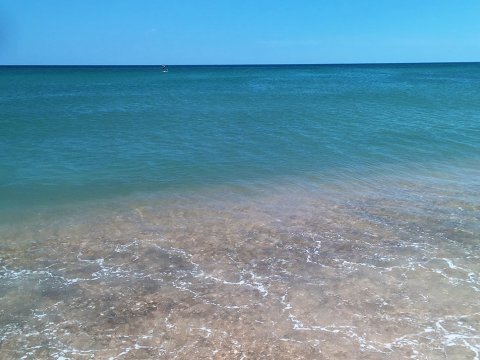Travel Guide: Outer Banks Weather, Water Temperature & Clarity
What to Know About Weather & Water Temp in the Outer Banks
Planning a trip to the Outer Banks? To enjoy the perfect scenery — no matter which beautiful spot you choose on the islands — it’s helpful to understand Outer Banks' temperature, weather, and water clarity. These elements all play a role in shaping the ideal beach experience you’re after.
In this essential travel guide, we’ll cover everything you need to know about Outer Banks weather, water temperatures, and clarity, including how clear the water tends to be, the best conditions for enjoying it, and top activities to make the most of your visit. But first…
About Village Realty
Whether you're looking for OBX vacation homes, Village Realty has been a trusted name in OBX real estate and vacation rentals for over 25 years. From local fishing tips to outdoor activities and culinary recs, we’re the experts in the area — just take a look at our blog.
Let's dive in!
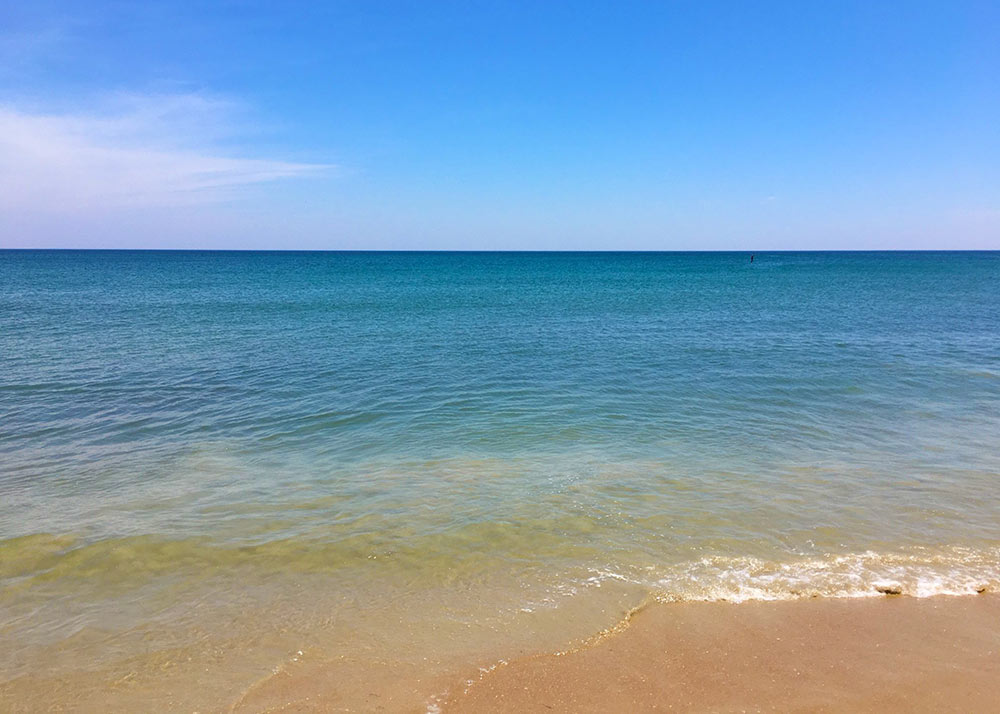
Outer Banks: An Ever-Changing Nature
One of the most captivating aspects of the Outer Banks is the ever-changing interplay of weather and natural elements. As the easternmost point of the continental U.S., this 200-mile stretch of barrier islands along the Atlantic showcases diverse conditions, often varying significantly from one location to another.
The Outer Banks is subject to both beautiful weather and clear waters, as well as dramatic shifts that bring harsher conditions. Despite these fluctuations, the majority of late spring, summer, and early fall sees calm, clear waters along the Atlantic side of the Outer Banks.
Throughout this blog, we’ll include some images. Each image reflects typical conditions, showcasing how the Atlantic’s appearance shifts with the elements.
The Outer Banks offers a dynamic coastal experience, where each day brings a unique perspective shaped by the Atlantic's ever-shifting beauty.
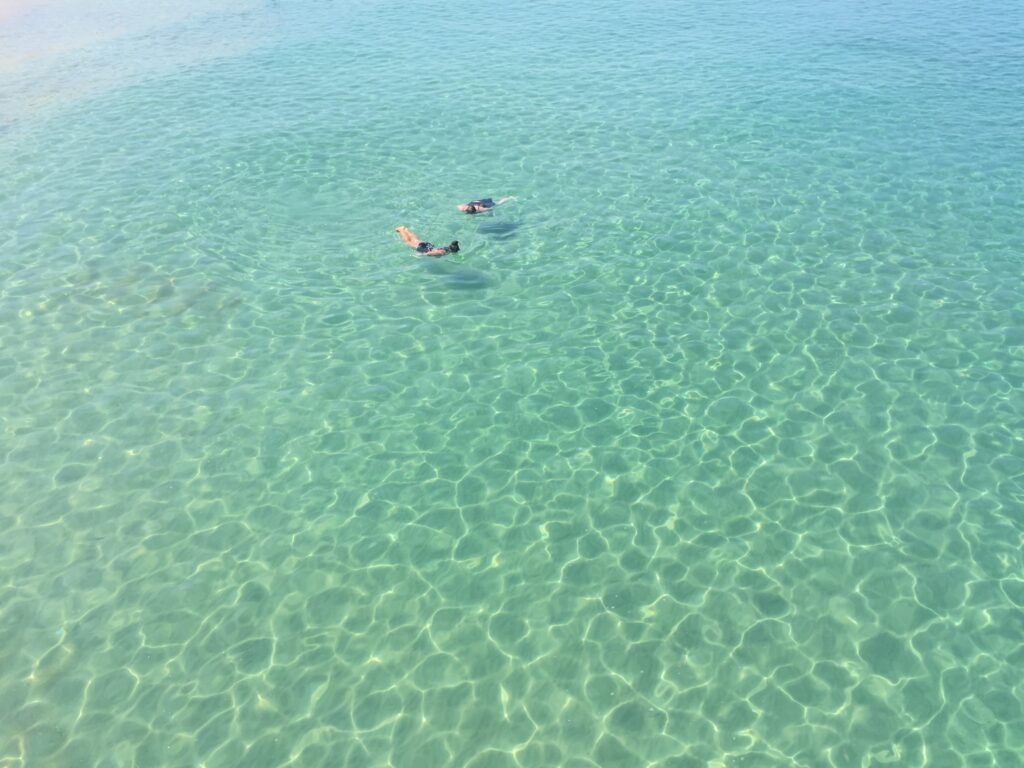
Outer Banks Weather Patterns & Outer Banks Temperature
The Outer Banks experiences distinct seasonal variations, with approximately 200 sunny days per year and an average annual temperature of around 70°F. However, the weather can shift dramatically between seasons.
Let’s see the changes in weather and Outer Banks' temperature:
Summer (June-August)
- Temperatures: Daytime highs range from the mid-70s to near 90°F, making it ideal for beach days.
- Winds: Southwest winds consistently pick up in the late afternoons, creating perfect conditions for kite flying or cooling down after a hot day in the sun.
- Humidity: Humidity levels hover around 78-79%, which can make it feel warmer than the actual temperature.
- Rainfall: July is the rainiest month, with around 7.6 inches of rainfall, so be prepared for occasional afternoon showers.
- Wind Speeds: Winds average around 14 mph, providing a gentle breeze that helps mitigate the summer heat.
Takeaway for Visitors: Summer is perfect for sun-seekers, but afternoon winds and showers are common. Mornings tend to be calmer and clearer, so it's the best time to enjoy outdoor activities like paddleboarding or a beach stroll.
Fall (September to November)
- Temperatures: In September, the Outer Banks' temperatures offer lingering summer warmth in the low 80s, while October brings cooler, more comfortable temperatures in the mid-70s.
- Winds: Winds strengthen slightly to 15-17 mph, adding a refreshing breeze, especially as temperatures begin to drop.
- Humidity: Humidity drops to a more manageable 73-76%, offering a more pleasant atmosphere for outdoor activities without the heavy, sticky feeling of summer.
- Rainfall: Rainfall decreases, making fall drier and more stable for travel plans.
- Wind Speeds: The breezier conditions of fall lend themselves well to activities like sailing, kiteboarding, or simply enjoying the crisp air on a beach walk.
Takeaway for Visitors: Fall is ideal for those seeking cooler weather and fewer crowds. September holds onto the warmth, while October offers that perfect balance between summer and winter. With lower humidity and less rainfall, fall is perfect for hiking, fishing, or enjoying coastal drives along the scenic Outer Banks.
Winter Climate (December to February)
- Temperatures: Winter in the Outer Banks sees daytime highs ranging from the low 50s to mid-60s°F, with colder nights.
- Winds: Winter brings stronger winds, particularly from the northwest, which can make the coastal air feel even cooler.
- Humidity: Humidity levels drop to around 70-72%, making the air feel crisper but more comfortable for outdoor walks and photography.
- Rainfall: Rainfall remains moderate, but the threat of storms and colder rain makes it important to bring layers and waterproof gear.
- Wind Speeds: Winds average between 17-20 mph, with gusts reaching higher speeds during storms, adding a dramatic touch to the coastal landscape.
Takeaway for Visitors: Winter is a quieter time in the Outer Banks, making it ideal for those seeking solitude, nature walks, and winter beach photography. While not beach weather for swimming, the cooler air is perfect for outdoor activities like bird watching, beachcombing, and exploring historic sites. Dress in layers to stay warm against the brisk winds, and prepare for the occasional winter storm, which adds a beautiful, rugged charm to the landscape.
Spring Conditions (March to May)
- Temperatures: Early spring starts cool with highs in the 50s and 60s°F, but by late May, temperatures rise to a pleasant 70-75°F, perfect for outdoor exploration.
- Winds: Winds remain strong in early spring but begin to calm down by late spring, setting the stage for milder weather and clearer water.
- Humidity: Humidity levels in spring hover around 70-75%, offering a refreshing atmosphere without the stickiness of summer.
- Rainfall: Rain is less frequent than in summer, but spring showers are not uncommon, particularly in April. These showers are often short and followed by sunshine.
- Wind Speeds: Wind speeds start high, averaging 15-18 mph, but they decrease as summer approaches, bringing calmer beach conditions.
Takeaway for Visitors: Spring is a transitional season, perfect for those who enjoy moderate temperatures and fewer crowds. Early spring brings cooler, windier conditions, which are great for sports like kiteboarding, while late spring warms up enough for beach lounging and water activities. Expect a mix of sunny days and light showers, making this season ideal for hiking, sightseeing, and enjoying nature in bloom.
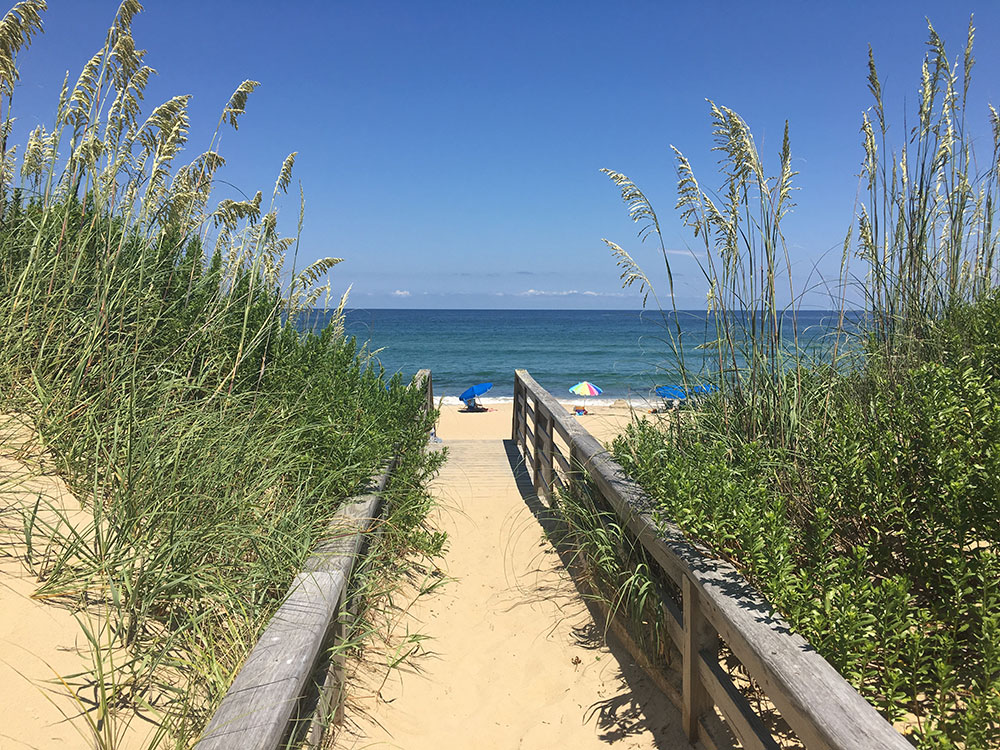
Outer Banks Water Temperatures
The Atlantic waters surrounding the Outer Banks experience seasonal temperature shifts, which can influence your swimming and water sport activities. Here's what to know by season:
Peak Season (July-August)
- Average Water Temp: In July, the water reaches a comfortable 80.4°F, perfect for swimming, surfing, or just wading in the ocean.
- Maximum Temperature: The water can warm up to 83.8°F during this peak season, offering bath-like conditions.
- Minimum Temperature: Even at its coolest, the water rarely drops below 74.8°F during the peak of summer.
Takeaway for Travelers: If you’re visiting in July or August, expect warm, inviting waters perfect for all-day swimming. These months offer the best conditions for enjoying water sports or simply lounging at the beach.
Seasonal Progression of Water Temp Outer Banks by Season
- Early Spring (March-April): Water temperatures hover around 50-60°F, better suited for quick dips or wetsuit-protected activities.
- Late Spring (May-June): Temperatures rise to a more comfortable range of 60-70°F.
- Summer (July-August): Water peaks at 70-80°F, the perfect window for swimming and beach fun.
- Early Fall (September-October): Water remains in the 70s°F, making it great for swimming well into autumn.
- Late Fall (November-December): Temperatures dip back down to the 50-60°F range, signaling the end of prime swimming season.
Takeaway for Travelers: The warmest and most inviting waters occur from late spring to early fall, while early spring and late fall see cooler temperatures better suited for shorter dips or activities requiring wetsuits.
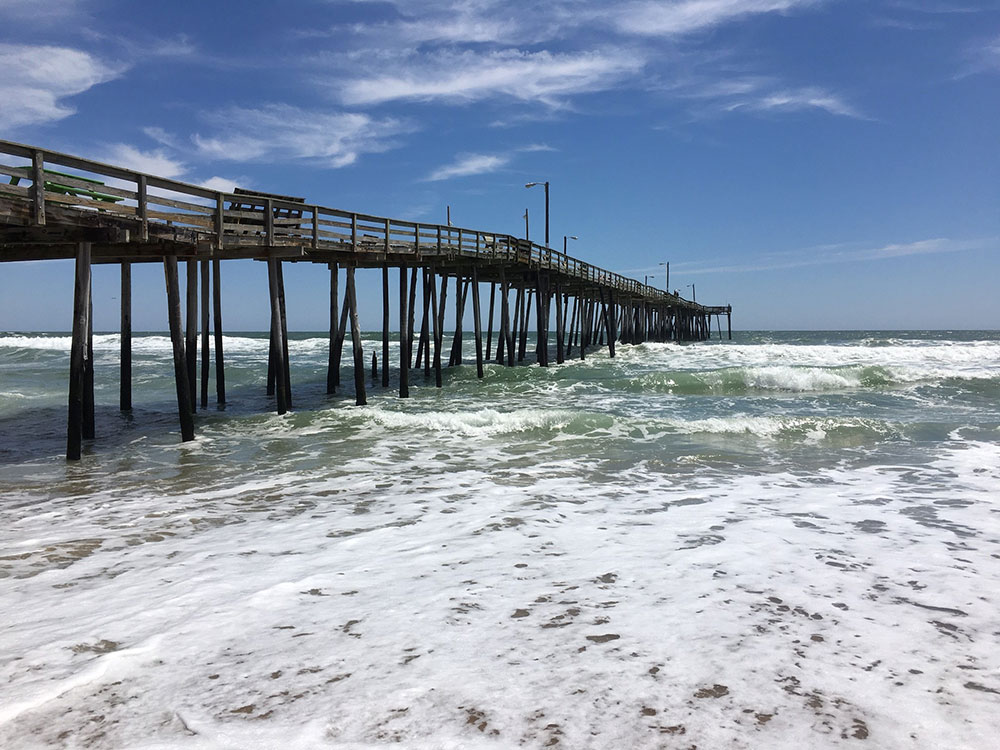
Outer Banks Water Clarity by Season
Wondering what the water clarity is like on the Outer Banks? Well, there’s no straightforward answer besides: "It changes all the time." Here’s a seasonal breakdown of water clarity in the Outer Banks, with tips on when to expect the clearest views.
Summer (June-August): Peak Clarity Period
- Summer generally offers the most consistently clear water, with beautiful blue and aquamarine hues during calm conditions.
- Optimal visibility occurs during gentle breezes under 10 mph, making the water especially inviting for snorkeling and paddleboarding.
- Pro Tip: The clearest conditions tend to be in the morning before afternoon winds pick up.
Fall (September-October): Transitional Clarity
- Early fall sees relatively clear water, though conditions can vary due to increased storm activity during hurricane season.
- Clarity may reduce temporarily after storms, as winds shift from southwest to northwest or northeast, impacting water visibility.
Spring (March-May): Improving Conditions
- As winter storms subside, water clarity steadily improves, especially in late spring as weather stabilizes.
- Visibility is generally good during calm periods, with southeast or east winds bringing in the clearest water.
- Tip: Wind direction greatly affects clarity in spring, so look for days with calm southeast or east winds for optimal conditions.
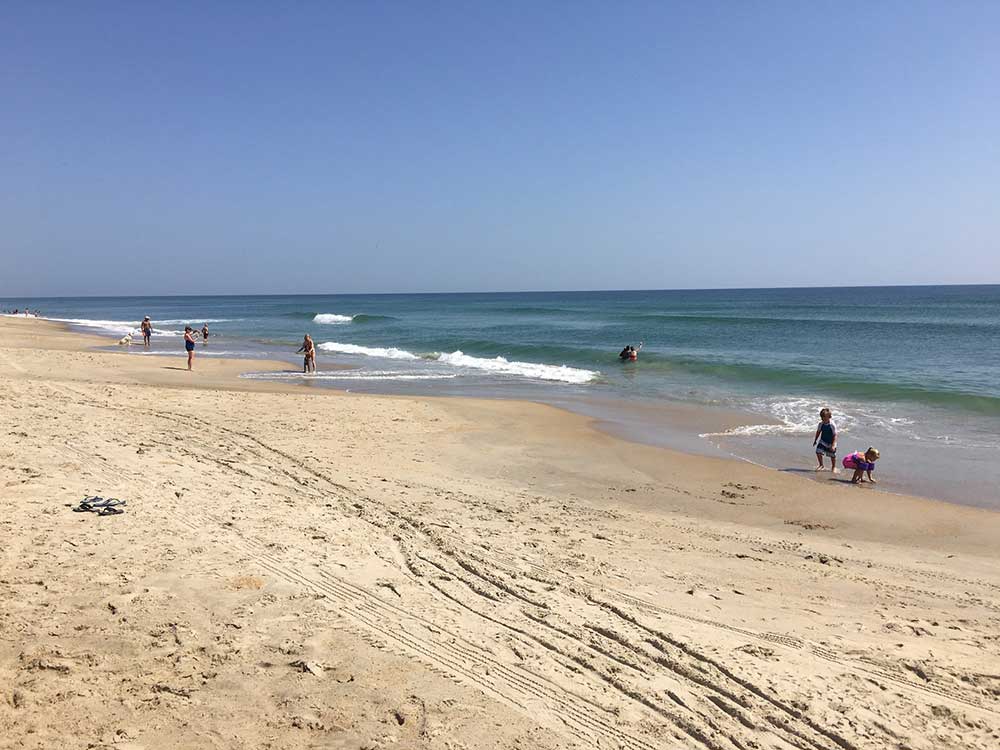
Wind Impact on Water Clarity
Water clarity is largely influenced by wind patterns; gentle breezes under 10 mph from favorable directions help keep the water pristine. A period without strong storms or swells often leads to exceptional visibility and serene conditions.
Here’s a quick guide to how different wind directions affect conditions in the Outer Banks:
- N: Cooler air
- NE: Cooler air + choppy, warmer water
- E: Warmer water
- SE: Warm air + warm water
- S: Warm air
- SW: Warm air + sandy water
- W: Sandy water
- NW: Cooler air + slightly sandy water
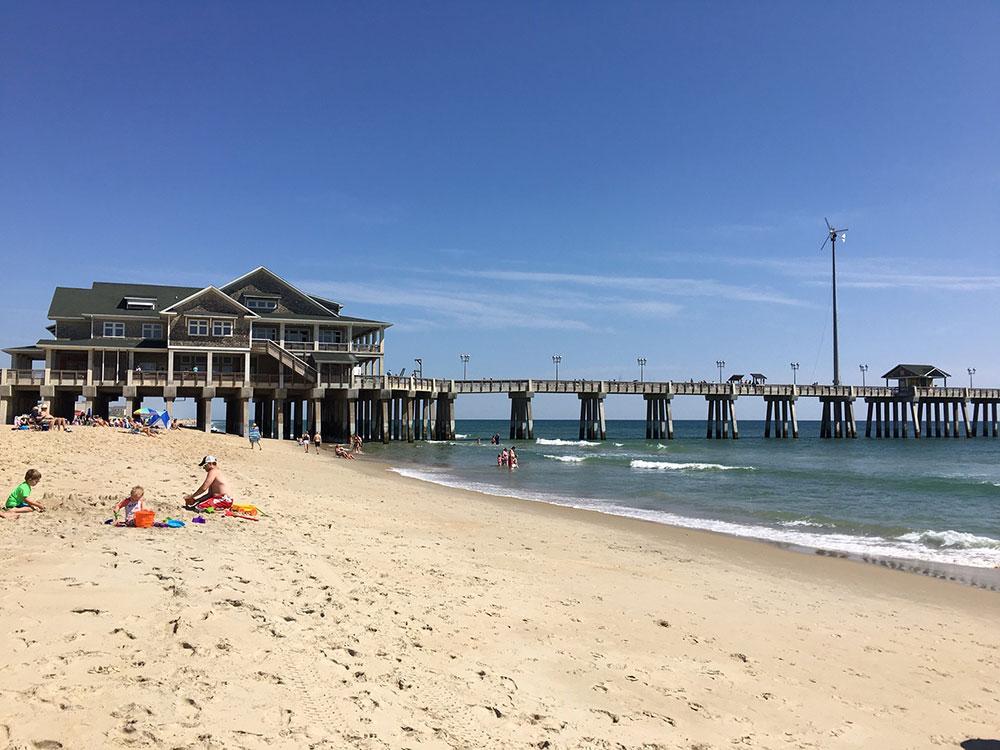
Extra Environmental Considerations
Tidal Influence
- Daily tidal changes impact water clarity and conditions, sometimes making the water appear clearer or cloudier throughout the day.
- Storm surges and strong currents can temporarily reduce visibility, especially after significant weather events.
- Shifting sandbars alter wave patterns and water clarity, adding to the dynamic nature of the coastline.
Takeaway: While water conditions and clarity in the Outer Banks can fluctuate, most of the year offers pleasant, clear waters and plenty of perfect beach days. Occasional choppy conditions may happen, but don’t worry—sunshine and great beach weather are the usual backdrop. And if the water isn’t ideal one day, the Outer Banks has a wealth of indoor and outdoor activities to keep you entertained.
Extra Tip: Embrace the beauty of changing nature and the ever-shifting Outer Banks weather — it’s part of the experience. From calm, crystal-clear days to occasional dramatic waves, each shift adds to the unique charm of this coastline.
Wondering Where to Stay in Outer Banks, NC?
Booking your stay with Village Realty means staying in one of our exceptional, handpicked homes. From the oceanfront to the soundfront, we offer outstanding condo rentals.
Our number one priority? Your ultimate comfort and happiness. Our local staff will always go the extra mile to make sure you and your family have a special vacation in OBX.
Staying with us, all you have to care about is letting the coastal beauty whisk you away - and you can rest assured it will!


